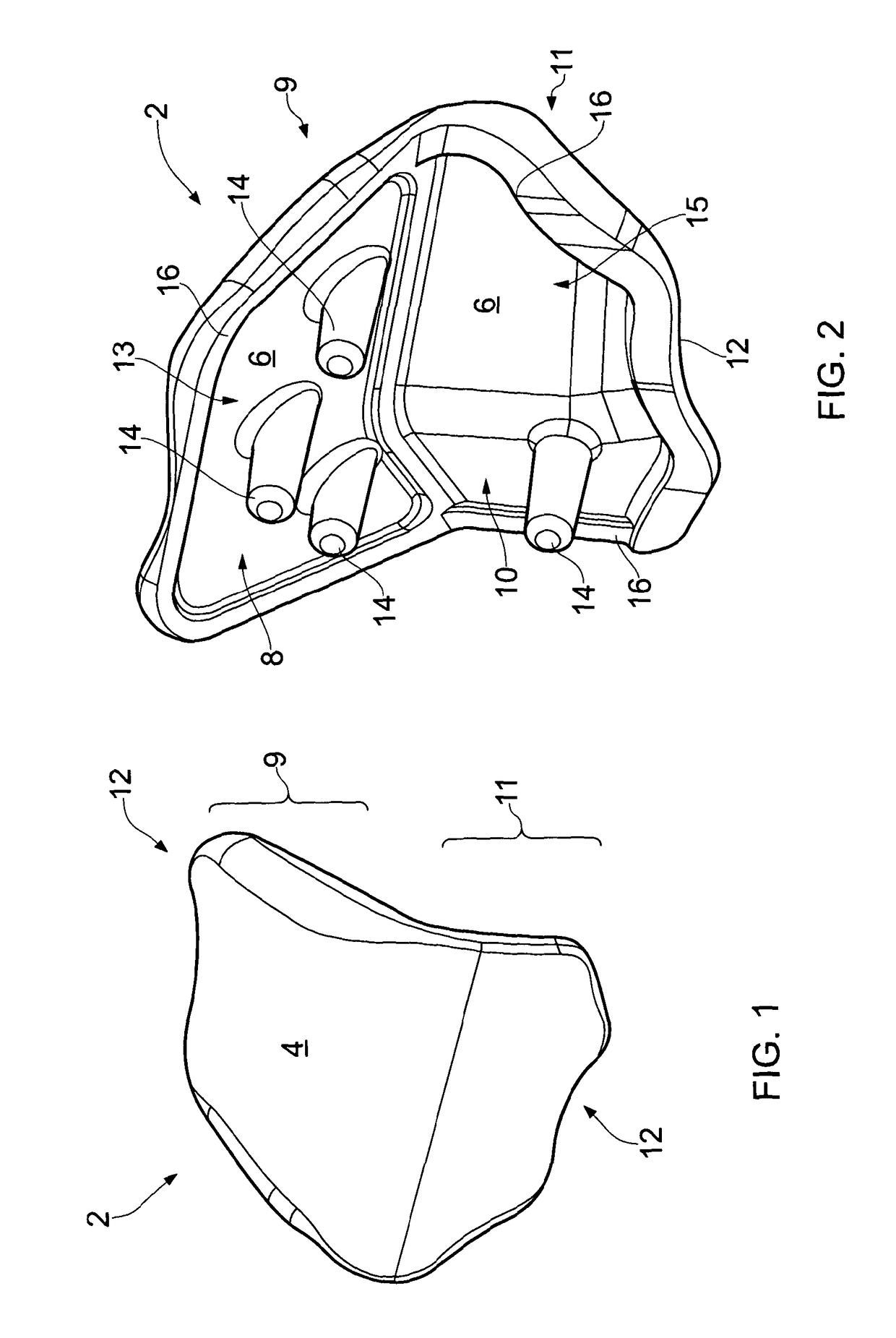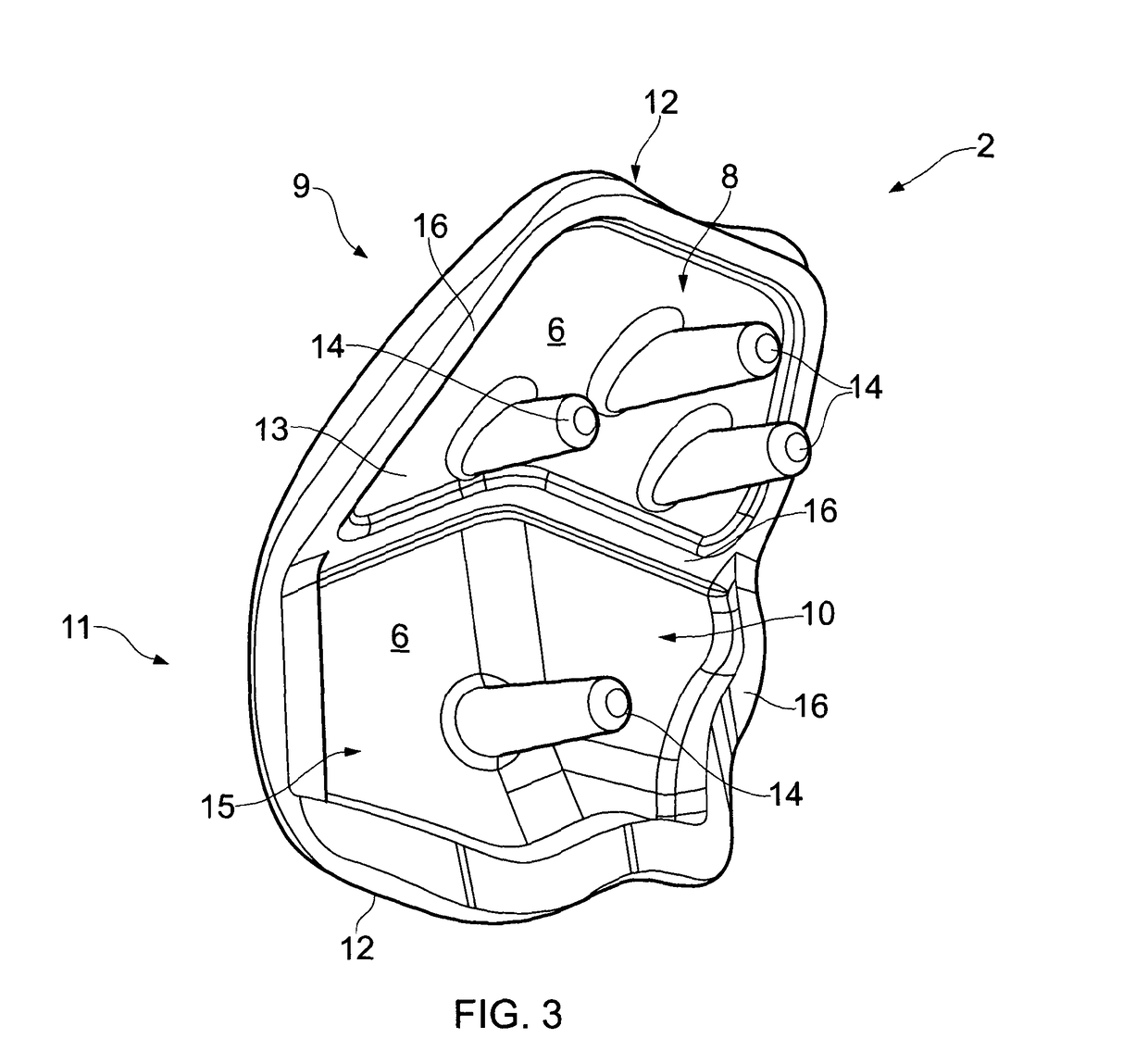Guide tool for resection of patellofemoral joint
a technology for resection and guide tools, which is applied in the direction of bone drill guides, surgical saws, medical science, etc., can solve the problems of high surgical demands, inability for surgeons to achieve perfect fit, and difficulty in achieving free hand removal of significant bone areas, etc., and achieve the effect of compromising the overall stability of the tool
- Summary
- Abstract
- Description
- Claims
- Application Information
AI Technical Summary
Benefits of technology
Problems solved by technology
Method used
Image
Examples
Embodiment Construction
[0041]A femoral resurfacing prosthesis 2 for a patellofemoral joint is illustrated in FIGS. 1 to 3. The prosthesis 2 comprises an articulating surface 4 that is shaped to articulate with a patella resurfacing prosthesis or natural patella (not shown) and a bone engaging surface 6. The bone engaging surface is designed to rest adjacent a resected distal femoral surface and may be cemented in place. It will be appreciated that the bone engaging surface 6 is a relatively complex surface, varying in three dimensions. The surface 6 comprises a first substantially planar part 8 and a second substantially “V” shaped part 10, the two parts 8, 10 of the bone engaging surface 6 corresponding to anterior 9, and posterior 11 regions of the prosthesis 2 respectively. Each part 8, 10 of the bone engaging surface may be slightly recessed, with a protruding border 16 around its periphery. The recessed surfaces 8, 10 and borders 16 define two shallow recesses 13, 15 within which bone cement may be l...
PUM
 Login to View More
Login to View More Abstract
Description
Claims
Application Information
 Login to View More
Login to View More - R&D
- Intellectual Property
- Life Sciences
- Materials
- Tech Scout
- Unparalleled Data Quality
- Higher Quality Content
- 60% Fewer Hallucinations
Browse by: Latest US Patents, China's latest patents, Technical Efficacy Thesaurus, Application Domain, Technology Topic, Popular Technical Reports.
© 2025 PatSnap. All rights reserved.Legal|Privacy policy|Modern Slavery Act Transparency Statement|Sitemap|About US| Contact US: help@patsnap.com



